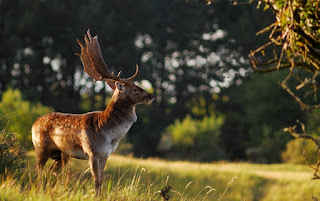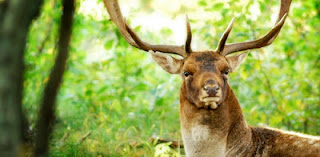 Although very
late, the blogpost about the rut of 2012 is finally here. This year, the
weather did not wanted to cooperate. Most of the times, there were a lot of
clouds meaning soft not-dramatic light, and it rained a lot. Nevertheless I could
not resist going, which was rewarded every time.
Although very
late, the blogpost about the rut of 2012 is finally here. This year, the
weather did not wanted to cooperate. Most of the times, there were a lot of
clouds meaning soft not-dramatic light, and it rained a lot. Nevertheless I could
not resist going, which was rewarded every time.
This year
started of with a great day, the weather was good, and we got some amazing light
the last 3 hours before the sun went down. Because I thought the rut hadn’t
really started yet I wandered of from the usual arena to a big field nearby. It
turned out there were a lot of deer, waiting for the night to fall. I crossed
the field, but all of a sudden I heard a fight going on nearby. I ran back to
the field, and crouched behind a hill trying to prevent disturbance. 2 deer started
were fighting like it was their last day. Sand was going through the air, and
they just didn’t stop. And most importantly, they did not run away after a
fight.
Usually when
you see a fight, you are lucky to see 2 or 3 “strikes” but with these men showed
me their whole fight. When they were finished, and one had clearly won the last
few strikes, the defeated one ran away, while the winner was approaching me. I backed
away silently, and saw him walking up “my” hill. And he just stood there, in
the best light I could have imagined. Although I had mounted my camera on a
tripod, I could see the shaking of my hands in the viewfinder, as I was pumped
with adrenaline.
After this
day, nothing compared to that day again. The weather got worse, and it rained a
lot. When the rut was almost over I decided to try one more time, ignoring the
rain. With rain clothes and a watertight bag, I tried one more time. After an
hour walking I was lucky enough for the clouds to break, just when I spotted a
deer. The deer didn’t mind me at all, and as long as I stayed on the path, he
wouldn’t run away. Using a 135mm, I was able to get this image. I was that
close, and he didn’t mind at all. When this moment was over, I walked past him,
and he just kept looking at me. With that curious deer, the rut was over for
me.
Time to concentrate
on some landscapes.




















.jpg)




.1.jpg)







